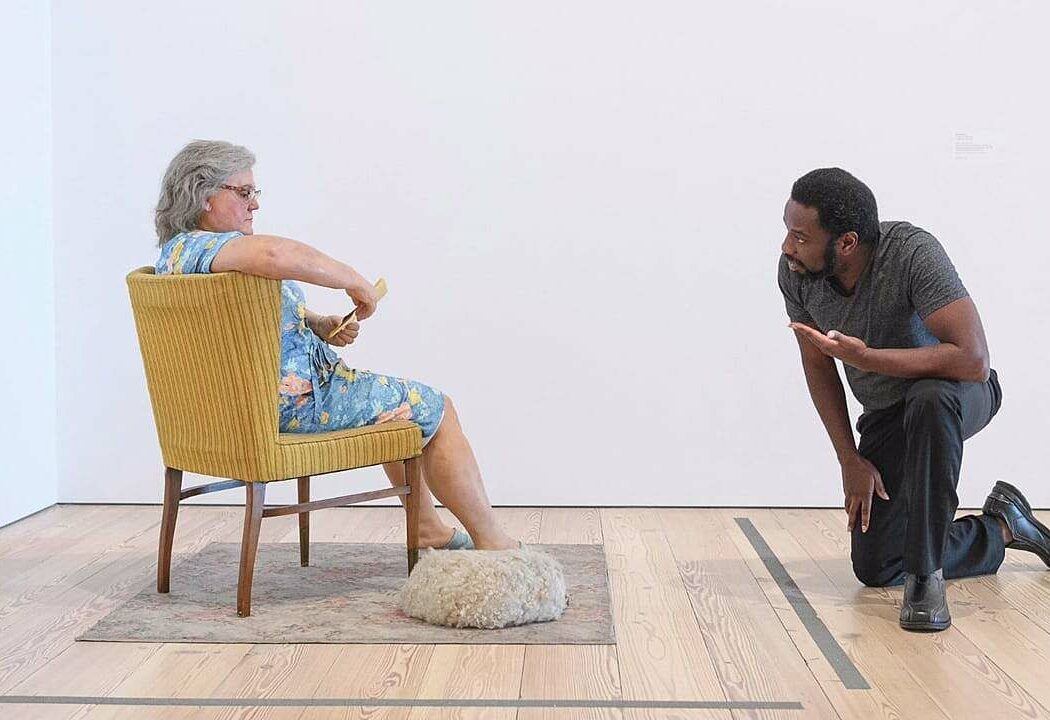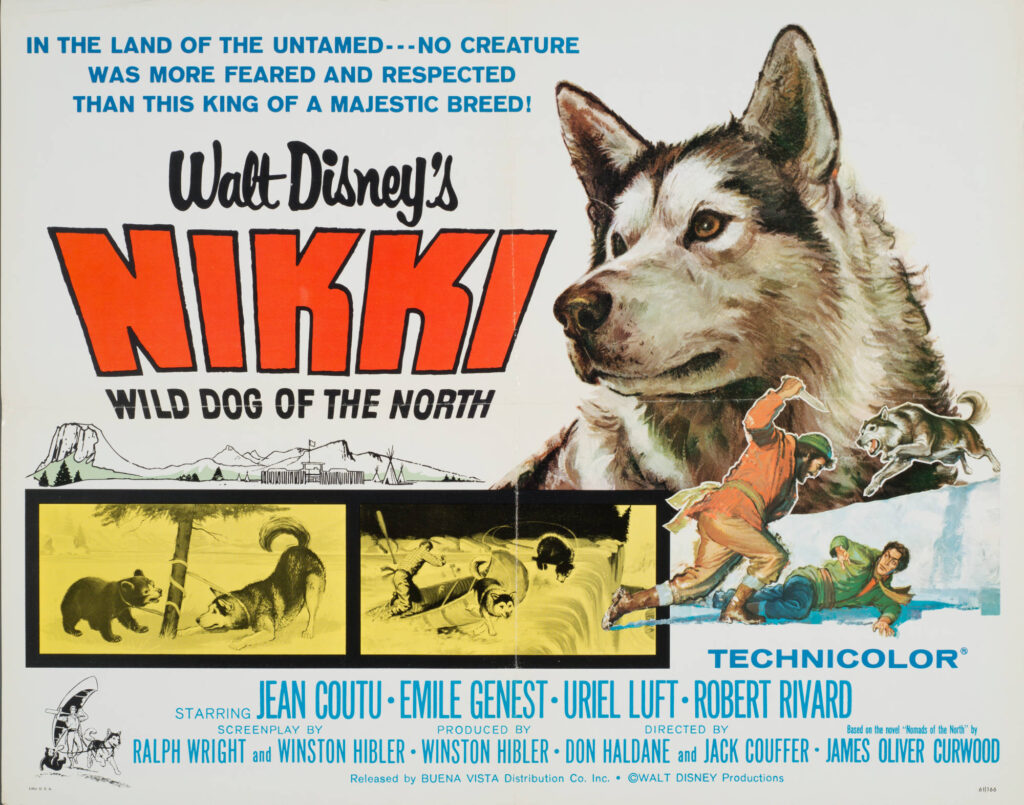
Don’t always trust what you see; the above photograph is misleading. While the man on the right is real, the woman in the chair is a sculpture, one of the astonishingly realistic figures created by artist Duane Hanson (1925-1996). Artnet describes Hanson’s method: “Using polyester resin, Bondo, bronze, or fiberglass, Hanson’s technique involved casting living people and then painstakingly painting the fiberglass figure with all the imperfections and veins of actual skin. ‘My art is not about fooling people,” the artist explained. ‘It’s the human attitudes I’m after—fatigue, a bit of frustration, rejection. To me, there is a kind of beauty in all this.’” Learn more about hyper-real sculpture from this New Yorker review of a “Like Life” exhibition at the Met Breuer Museum, and check out more Hanson pieces here and here.

Before he began working for E.C. Comics in 1950—where he invented MAD magazine and revolutionized American humor—Harvey Kurtzman was a freelancer at other comic-book companies, including Timely Comics (which would later become Marvel). Kurtzman’s specialty at Timely was writing and drawing one-page comedy strips usually titled “Hey, Look!” and designed to fill out comics that needed an extra story page. But the “Hey, Look!” comics remain funny even today. On the Who’s Out There? blog, Richard Gagnon reviews a 1992 book collection of Hey, Look! and in the process gives us several choice examples of Kurtzman’s loopy humor.
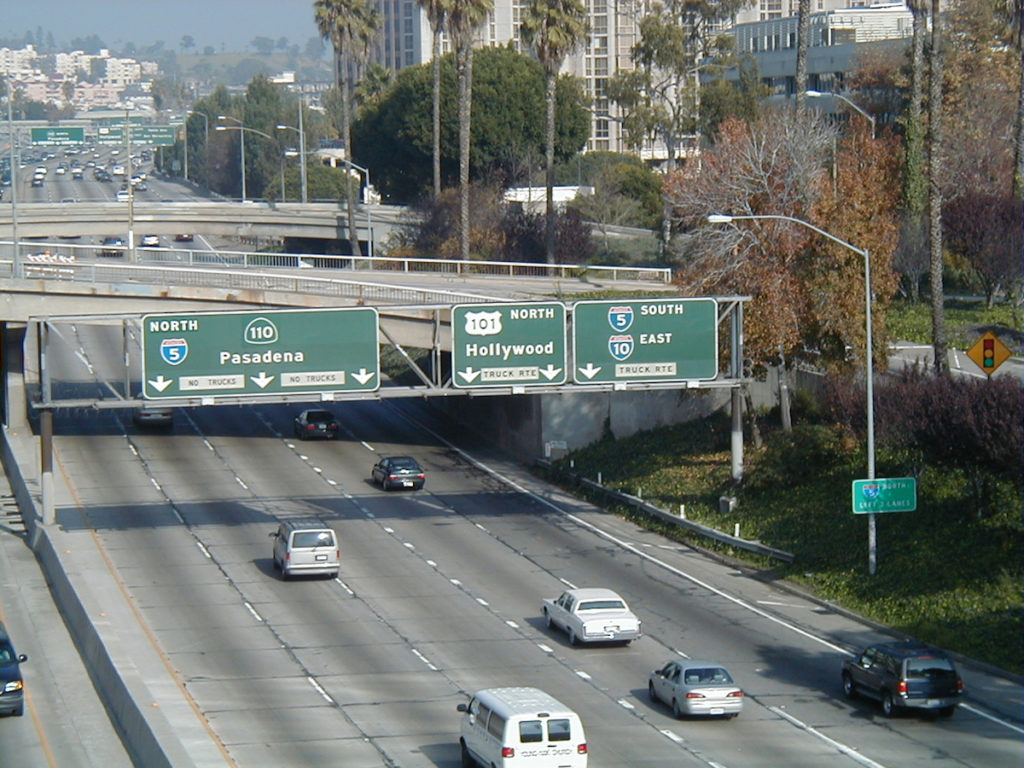
In 2001, Los Angeles artist Richard Ankrom noticed that one of the exits on the very busy 110 road to downtown was very poorly labeled, so he decided to fix the problem himself. Ankrom made his own convincing aluminum replica of California transportation signage and, on the morning of August 5, 2001, climbed a ladder and attached his example of “Guerrilla Public Service” to the vertical sign bridge over the road. And there it hung, directing drivers to the exit more effectively, for nine months—until he posted a video about the construction of his sign and the press went wild. Find out what happened next by reading this comprehensive, fascinating article by Nate Rogers on The LAnd site.
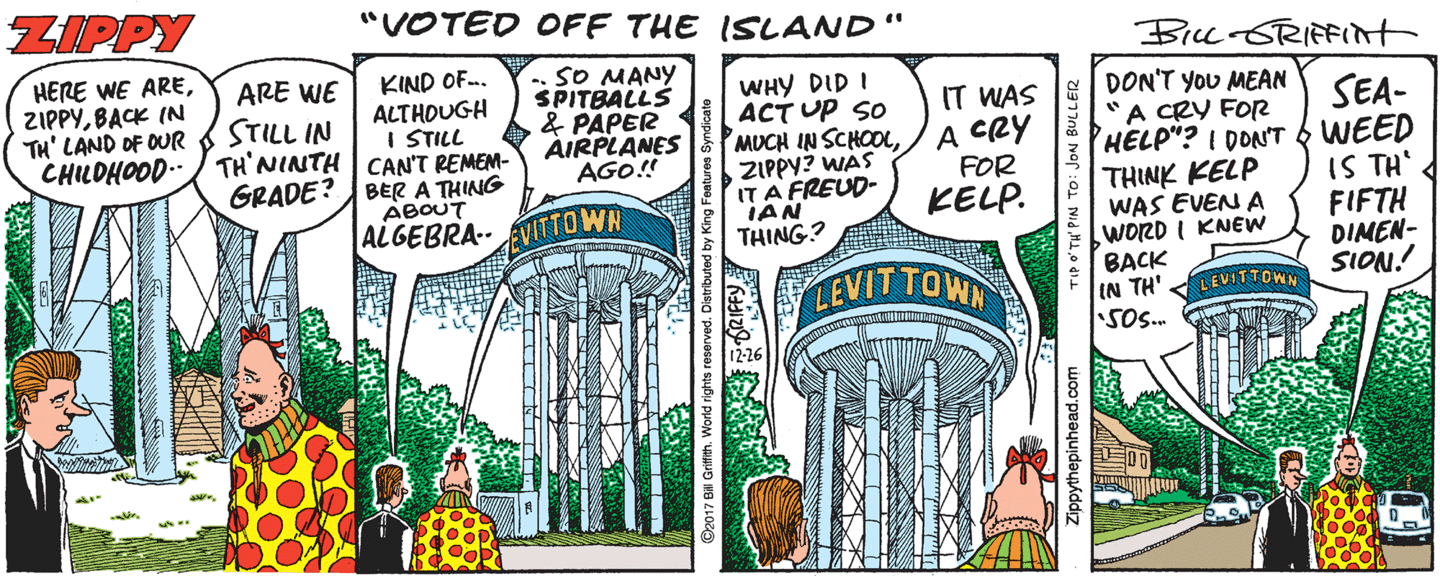
Bill Griffith’s comic strip Zippy the Pinhead has run in newspapers since 1986—an incredible feat, given Zippy’s roots in underground comic books and how joyously unconventional Zippy has been over its 35-year run. There are two central characters in Zippy. First is Zippy himself, who wears a polka-dot muumuu, speaks in non-sequiturs, and embraces the wildest excesses of consumer culture. (One of Zippy’s favorite meals consists of Ding-Dongs drenched in taco sauce.) And Zippy’s foil is Griffy, a semi-autobiographical version of cartoonist Griffith, a nostalgic curmudgeon often outraged by contemporary society. The conversations between Zippy and Griffy (and among the strip’s supporting cast too) are my daily reminder to balance taking life seriously while simultaneously recognizing the absurdity of it all. Check out a few recent Zippy comics here, and visit Griffith’s site for lots more.
The Harry Ransom Center at the University of Texas at Austin has a collection of over 10,000 movie posters that “span the entire history of film from the silent era to the present day,” and most of these posters have been digitized and made available as free, high-quality downloads. Here’s a blog post from the Center describing the background of the poster collection. It’s also fun to type in a random word in the site’s “Advanced Search” box (at the top of the collection’s main site) and see what pops up. I tried the word “Dog” and found the above Nikki: Wild Dog of the North (1961) poster, as well as other results. (Parents: there are some posters for R-rated and erotic movies, so browsing the collection with your kids is a good idea.)
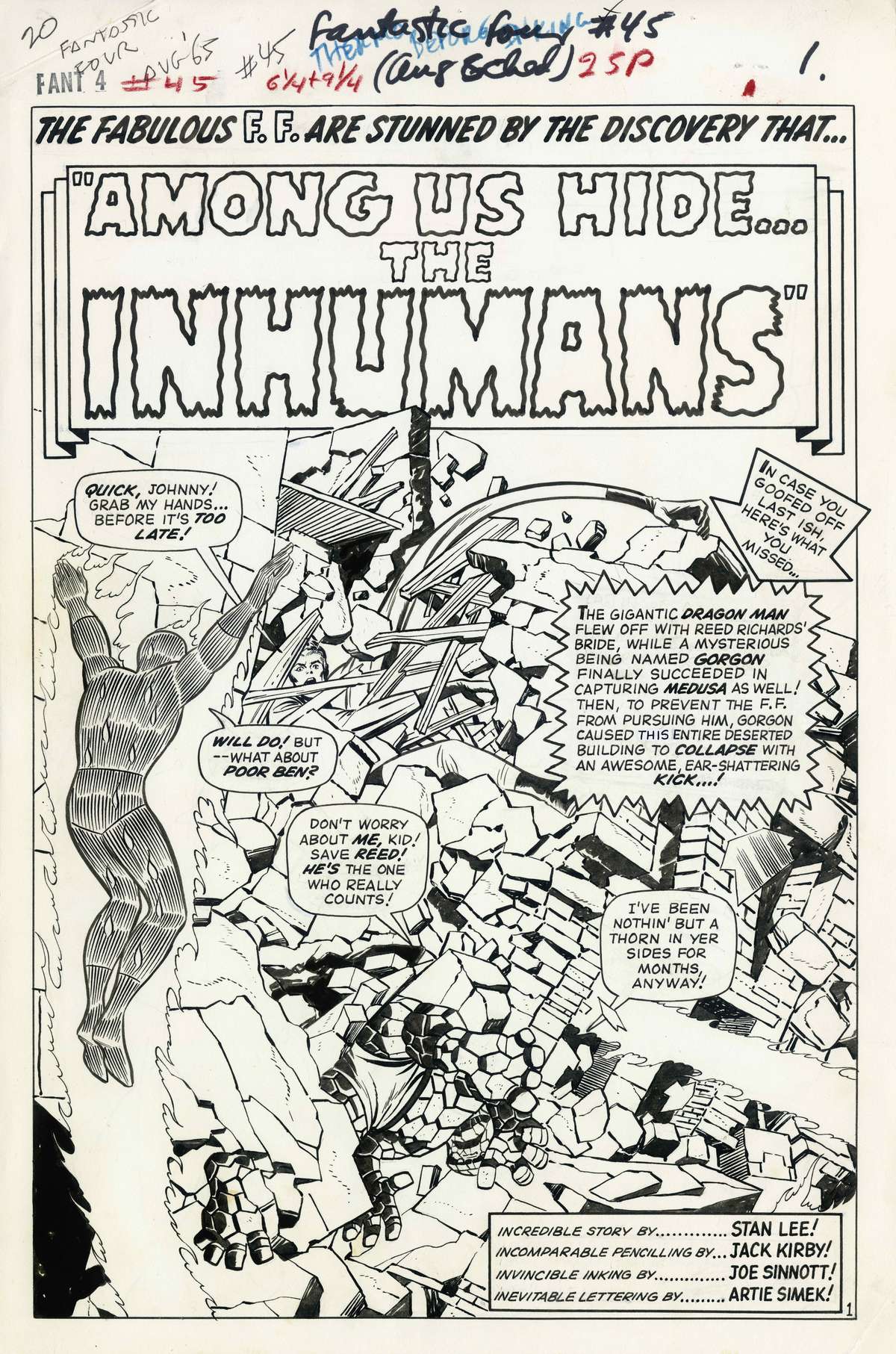
Happy 60th Anniversary, Marvel Comics! Fans and scholars agree that Marvel began with The Fantastic Four #1 in July-August 1961 (even though the practices of various magazine distributors practices make it impossible to determine a single date when FF #1 became available at U.S. newsstands). Most also consider the 102-issue run of The Fantastic Four (from 1961 to 1970) plotted and penciled by Jack Kirby and dialogued by Stan Lee one of the highest achievements in superhero comics, especially the 1965-67 period where several important characters—the Inhumans, the Silver Surfer, the Black Panther—were introduced to Marvel in the pages of the FF. But for me, it’s Kirby’s powerful, imaginative, ever-innovative art that makes the FF classic, especially when Kirby’s pencils are inked by the talented Joe Sinnott. Following are some original art scans of the Kirby / Sinnott FF collaboration, courtesy of Heritage Auctions. Enjoy!
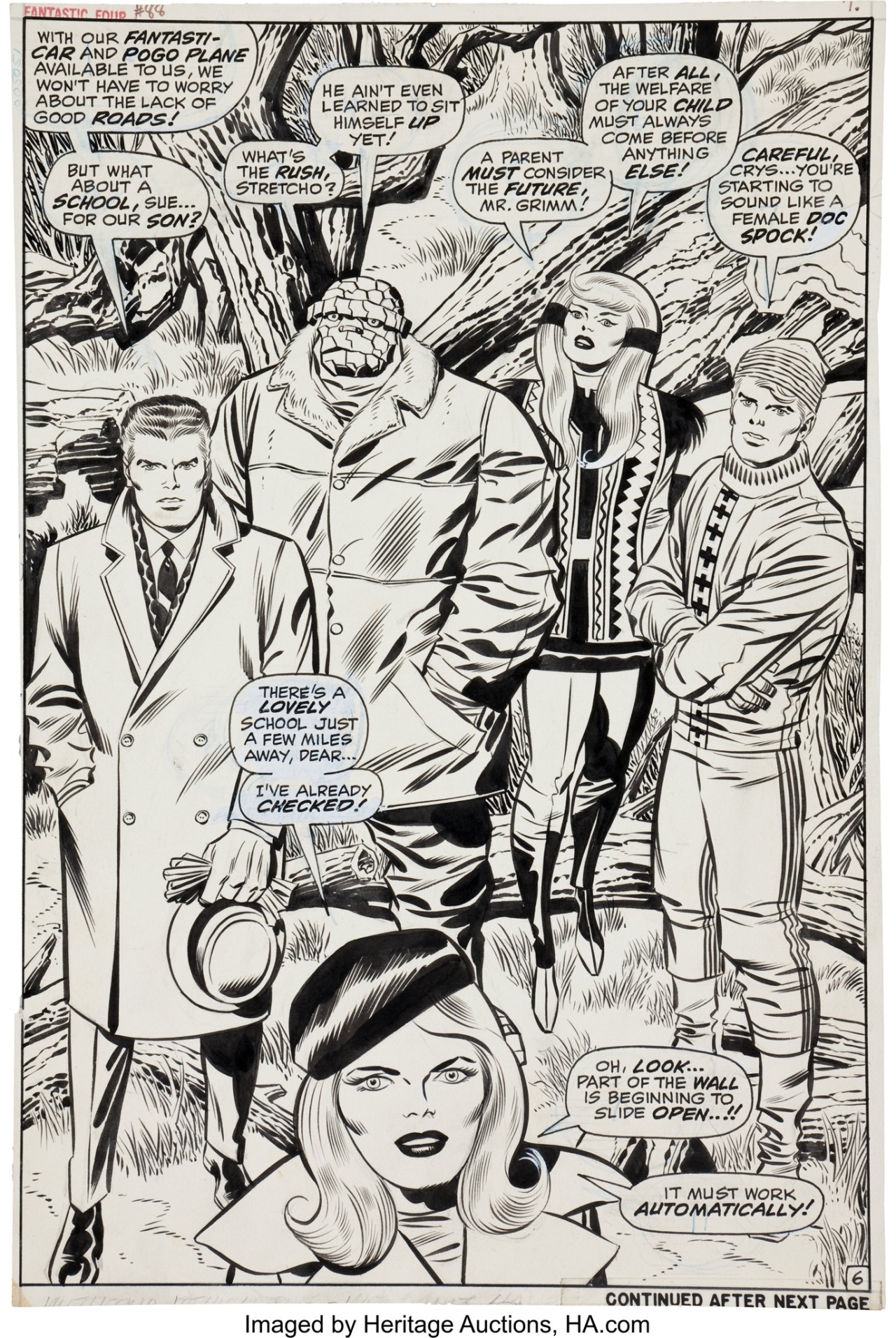
This weekly blog post is written and compiled by Craig Fischer. To send along recommendations, ideas, and comments, contact Craig at [email protected] [.]

